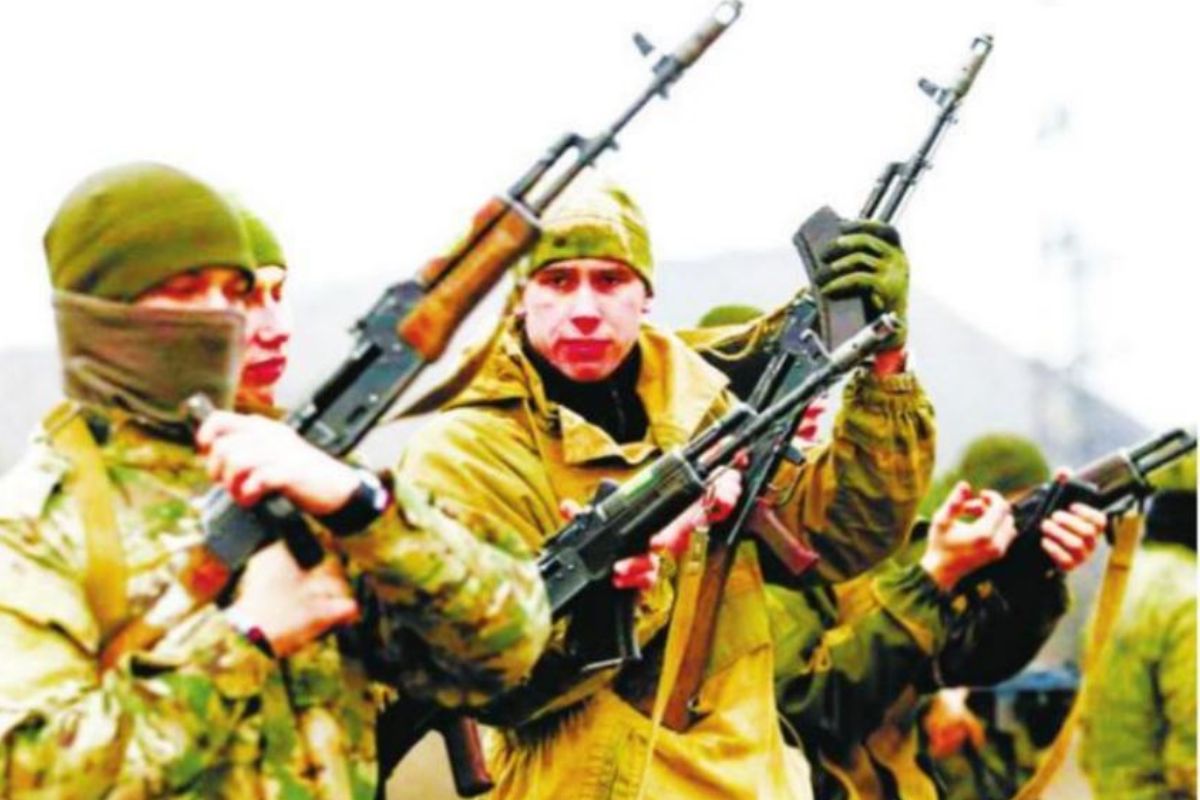Solving Palestinian issue will bring stability to Middle East: President Mahmoud Abbas
Palestinian President Mahmoud Abbas said Saturday that solving the Palestinian issue will promote stability in the Middle East region.
In recent years, welcome efforts have been made to regulate the trade of a wide range of arms using the Arms Trade Treaty, but a big hurdle for these noble and much-needed efforts has been encountered in the form of the activities of weapon smugglers and traffickers.

Photo: SNS
In recent years, welcome efforts have been made to regulate the trade of a wide range of arms using the Arms Trade Treaty, but a big hurdle for these noble and much-needed efforts has been encountered in the form of the activities of weapon smugglers and traffickers.
Arms smuggling is known to involve some of the most dangerous criminals in the world. They are strengthened further by the hidden support from some official sources. This happens partly due to corruption, but what is most harmful is that some governments maintain contact with militant organizations and are interested at times in supplying weapons to them.
More recently, as unprecedented amounts of arms and ammunition are being sent to Ukraine, there are increasing concerns, including within Western countries, that this could boost the already strong arms smuggling networks of East Europe in particular.
Advertisement
In fact, keeping in view this already visible trend, recently the European Union has taken an important step of setting up a hub for checking arms smuggling based in Moldova. But this may not be adequate. During the last four decades or so, Eastern Europe, including Ukraine, has emerged as an important centre of arms smuggling. A Ukrainian cargo ship was found trafficking tanks, artillery and assault rifles to Sudan in 2009. Sophisticated weapons have been found to be headed first to non-suspicious targets, but later re-directed to areas where various militant groups are active.
The route from East Europe to the Middle East has been found to be the most lucrative. Huge loads of unidentified, suspicious cargo have been mentioned by investigators. What is more, some of this activity is not entirely beyond official eyes but instead falls in a grey zone, with some state agencies utilising these networks to provide weapons to some militant groups fighting in Syria or elsewhere.
When large quantities of Western arms started reaching Ukraine this year, initially the authorities were recording details of arms given to various militants and civilians, some of them with neo-Nazi identity. Later, however, this could not be maintained, and a lot of weapon distribution has gone largely unrecorded. Many Western weapons are first sent to the Polish border with Ukraine, and they’re loaded into trucks and vans. After this, however, it is not easy to trace where exactly the weapons go.
Jana Cernochova, the Czech defence minister, came close to voicing the concerns of several government officials when she recently told reporters, “It’s hard to avoid trafficking or smuggling – we didn’t achieve it in former Yugoslavia and probably won’t avoid it in Ukraine.” There are concerns also that various provisions of the Arms Trade Treaty may be increasingly violated in the context of the recent boost given to arms smuggling. When strong arms smuggling networks involving big criminals and crime syndicates already exist in East Europe, it does not require a lot of imagination to know that they will treat the Ukraine conflict (despite the terrible human distress it involves) as a huge opportunity to amass wealth by stepping up smuggling. So, the first impact is likely to be seen in smuggling and wider crime syndicates strengthening themselves.
On the other hand, arms smuggling may not be such an exclusionary activity for some crime syndicates as the conflict conditions may give them opportunities also for human trafficking and drugs smuggling and they may integrate these opportunities, although the primary focus in these war-time conditions is likely to remain on arms smuggling. What may delight smugglers is the increasingly more sophisticated and destructive nature of weapons available in the illegal arms bazaar compared to earlier times. They see this in terms merely of earning more profits, regardless of the humanitarian consequences of destructive weapons being smuggled.
A bigger concern relates to the ultimate destination of these weapons. As has often been seen, the highest costs of trafficking weapons as well as more destructive weapons are paid by people in various conflict zones who are caught in the middle. These conflict zones are more likely to be in Africa and Asia, particularly West Asia. What is perhaps most worrying is that these destructive and sophisticated weapons are also likely to find their way to some terrorist groups, particularly in the Middle East, but not excluding other parts of the world.
This in fact is the biggest concern of European authorities. What is no less likely is that these weapons are likely to reach many neo-Nazi and far-right militant groups. Last but not the least, this proliferation of weapons will strengthen crime and smuggling networks not just in East Europe but in other parts of the world as well, as the journey of these weapons is likely to be quite a long and winding one.
All in all, the boost of arms smuggling is likely to have many-sided adverse impacts in terms of harming ordinary people, disrupting the peace, increasing violence and crime, and aggravating the threat of terrorism and extremism in many parts of the world. It threatens to set back whatever gains have been made in regulation and control of arms trade and trafficking in recent times. These deeply worrying aspects should be carefully considered and remedial actions taken on the basis of unbiased analysis.
Advertisement